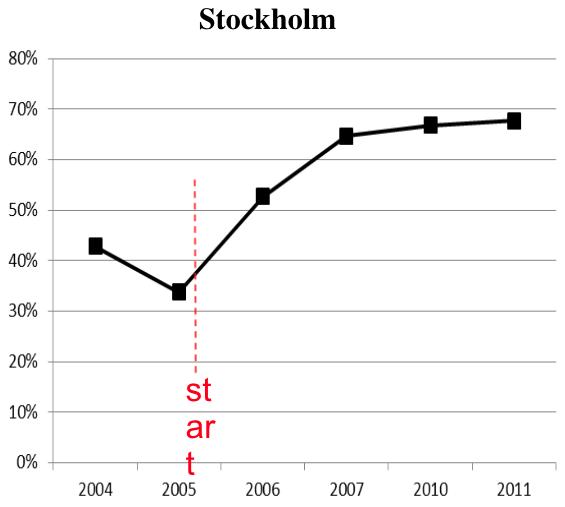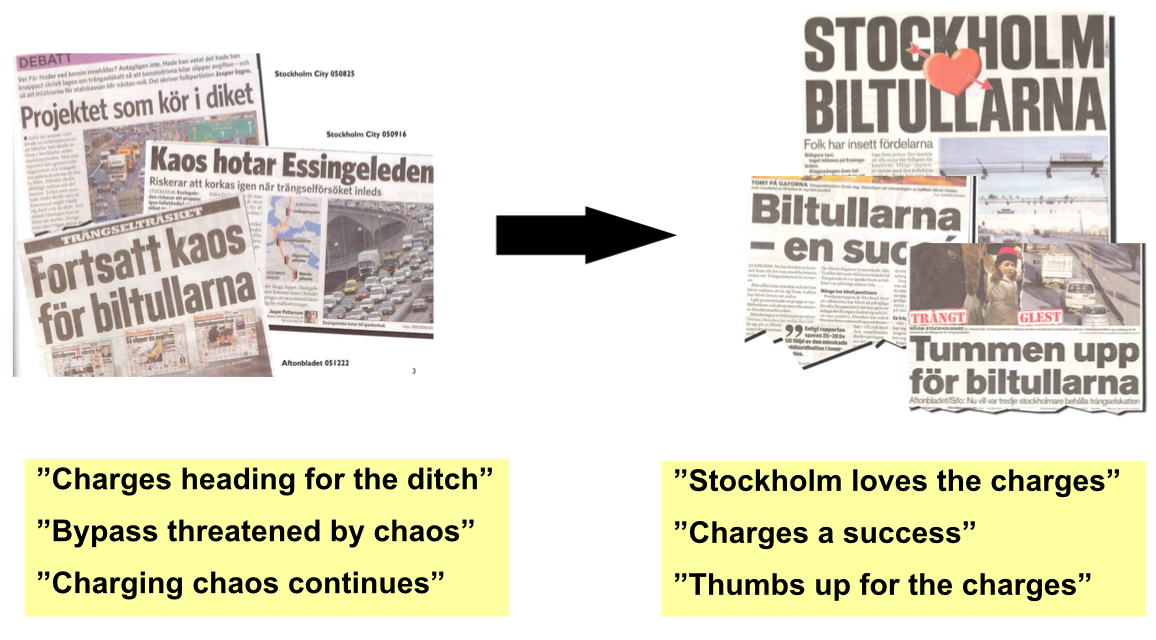It's natural for politicians to feel squeamish about enacting a big policy change like congestion pricing. People who've grown used to free driving privileges defend them loudly, while the potential benefits feel diffuse and uncertain. That may explain why Mayor de Blasio hasn't warmed to congestion pricing despite its promise to deliver a fairer, safer, greener, and more efficient transportation system.
Stockholm transportation director Jonas Eliasson has some advice for New York officials worried about diving in: Just do it.
Eliasson steered the implementation of congestion pricing in Stockholm in 2006. From that vantage point, he watched a skeptical public quickly embrace the policy as soon as they saw it in action. Eliasson shared lessons from the city's experience in a talk at TransitCenter last night.
When Stockholm began charging drivers to access the city center, car trips across the cordon dropped 20 percent. Travel times improved immediately, and emissions fell. Contrary to doomsday predictions from Stockholm media and political opponents of congestion pricing, the policy was an overnight success.
Before implementation, public support for congestion pricing had fallen below 40 percent. After a six-month trial period in 2006, more than 52 percent of Stockholm residents voted to make it permanent. By 2011, public support for road pricing stood at nearly 70 percent, and above 50 percent even among people who pay the fees most often.

“The closer you get to implementation, the more the drawbacks stand out," Eliasson said. "If you survive this valley of political death, and people actually see the benefits, and also realize that, in addition to the benefits, it’s actually not as bad as you thought — it’s not so hard adapting to this — then support starts going up again."
Pricing worked because the transportation planners who put it together prioritized systemic improvements for traffic and transit over the whims of elected officials and political parties. Getting the details of the pricing system right was too important to leave in the hands of politicians.
"Designing an efficient and effective congestion pricing scheme that actually delivers benefits is not easy," Eliasson said. Deciding the specifics of where tolls should be placed, the price at which they should be set, and when they should be in effect is "really the job for experts."
In Sweden, the effectiveness of road pricing helped raise public awareness of the drawbacks of other car subsidies. "It did something to the rationality of transport policy debate," Eliasson said. "We don't have debates anymore [about] 'parking pricing is just philosophically wrong' -- no one says that anymore."
If the policy passes in New York City, Eliasson thinks it could have a similar impact on transportation policy globally.
The specifics of the forthcoming congestion pricing plan from Governor Cuomo have yet to be revealed, but the governor reportedly intends to introduce a plan in the 2018 state legislative session.






